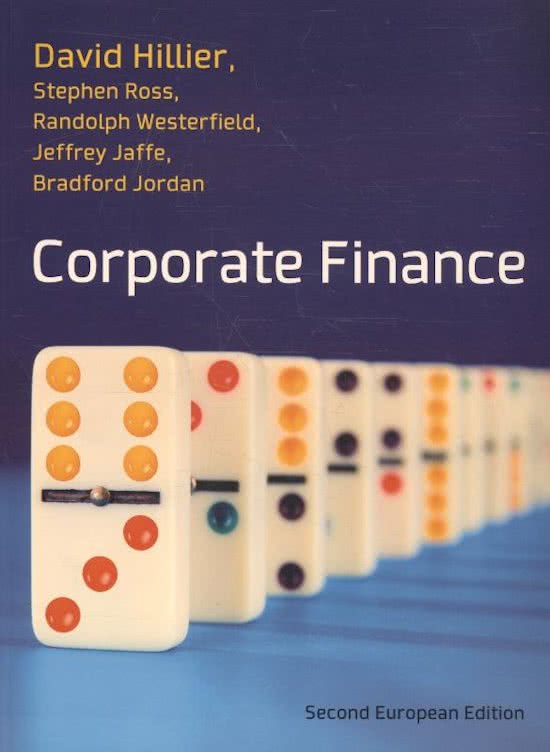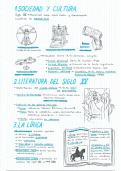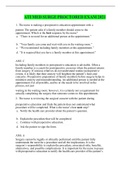Techniques in corporate finance generally use cash flows, whereas financial accounting
generally stresses income or earnings numbers. So always discount cash flows, not earnings,
when performing a capital budgeting calculation. Earnings do not represent real money. You
cannot spend out of earnings, you cannot eat out of earnings, and you cannot pay dividends
out of earnings. But you can do these things only out of cash flow. Also, in calculating the
NPV of a project, only cash flows that are incremental to the project should be used. These
cash flows are the changes in the firm’s cash flows that occur as a direct consequence of
accepting the project. That is, we are interested in the difference between the cash flows of
the firm with the project and the cash flows of the firms without the project. So:
IGNORE: sunk costs, allocated costs, depreciation
INCLUDE: opportunity costs and side effects (either erosion or synergy), allocated costs
(only if it is incremental cost of the project)
Allocated costs – frequently a particular expenditure benefits a number of projects.
Accountants allocate this costs across the different projects when determining
income, however, for capital budgeting purposes, this costs should be viewed as a
cash outflow of a project only if it is an incremental cost of the project. Example:
suppose Firm A devotes one of its offices to a library and pays a cash outflow of
$100,000 a year. A proposed capital budgeting project of Firm A is expected to
generate revenue equal to 5% of the overall firm’s sales. One executive at the firm
argues that $5,000 (=5% of $100,000) should be viewed as the proposed project’s
share of the library costs. Is this appropriate for capital budgeting? NO! One must
ask what is the difference between the CF of the entire firm with the project and
w/out the project. The firm will spend $100,000 on a library whether or not the
proposed project is accepted. Because acceptance of the proposed project does not
affect the CF, the CF should be ignored when calculating the NPV of the project.
Also,
Nominal CFs must be discounted at the nominal rate, and
Real CFs must be discounted at the real rate
OCF = EBIT – Taxes + Depreciation
THE 3 WAYS OF DETERMINING Operating Cash Flow (OCF):
1) Bottom-Up approach OCF =
Sales – Costs – Depreciation – Taxes + Depreciation
EBIT – Taxes + Depreciation
Net Income (before paying the interest rates) + Depreciation
Here, we add back any non-cash deductions such as depreciation. Note that this
definition of OCF as Net income (=EBIT-Taxes) plus depreciation is correct only if
there is no interest expense subtracted in the calculation of net income!
2) Top-Down approach OCF =
Sales – Costs – Taxes
It leaves out any non-cash items such as depreciation.
3) Tax-Shield approach OCF =
(Sales – Costs)(1 – tC) + Depreciation(tC)
It views OCF as having 2 components. The first part is what the project’s CF
would be if there was no depreciation expense. The second part is the
depreciation deduction multiplied by the tax rate. This is called the depreciation
tax shield. The only CF effect of deducing depreciation is to reduce our taxes, a
, benefit to us. At the rate of 28% tax rate, every pound in depreciation expense
saves us 28 pence in taxes.
Investments of Unequal Lives: The Equivalent Annual Cost (EAC) Method
Suppose a firm must choose between 2 machines of unequal lives. Both machines can do the
same job, but they have different operating costs and will last for different time periods. A
simple application of the NPV rule suggests taking the machine whose costs have the lower
PV. This choice might be a mistake, however, because the lower cost machine may need to
be replaced before the other one.
Example: suppose machine A costs $500 and lasts 3 years. There will be maintenance
expenses of 120 to be paid at the end of each of the 3 years. Machine B costs $600 and lasts
4 years. There will be maintenance expenses of $100 to be paid at the end of each of the 4
years. We place all costs in real terms, and revenues per year are assumed to be the same so
they are ignored. Note that these numbers are outflows. Let us take the PV of the costs of
each of the 2 machines, assuming a discount rate of 10%:
120 120 120 100 100
Machine A: 500 + + + Machine B: 600 + +
1.1 1.12 1.13 1.1 1.12
100 100
+ +
1.13 1.1 4
Machine A: $798.42 and Machine B: $916.99
NPV: -201.58 and NPV: -283.01
Machine B has a higher PV of outflows. A naive approach would be to select machine A
because of its lower PV. However, machine B has a longer life, so perhaps its cost per year is
actually lower.
How might one properly adjust for the difference in useful life when comparing the 2
machines? The easiest approach involves calculating something called the EAC of each
machine. This approach puts costs on a per-year basis.
The NPV equation showed us that payments of ($500, $120, $120, $120) are equivalent to a
single payment of $798.42 at date 0. We now wish to equate the single payment of $798.42
at date 0 with a 3-year annuity. That is,
$798.42 = C x A30.10
A30.10 (=2.4869) is an annuity of $1 a year for 3 years, discounted at 10%.
C is the unknown – the annuity payment per year such that the PV of all payments equals
$798.42.
We find that,
C = $321.05 (=$798.42/2.4869)
Thus, a payment stream of ($500, $120, $120, $120) is equivalent to annuity payments of
$321.05 made at the end of each year for 3 years. We refer to $321.05 as the EAC of
machine A. So one should be indifferent between cash outflows of ($500, $120, $120, $120)
and cash outflows of ($0, $321.05, $321.05, $321.05), starting from year 1. Alternatively, the
purchase of machine A is equivalent to a rental annual payment of $321.05.
Now let us turn to machine B. We calculate its EAC as:
$916.99 = C x A40.10
C = $289.28 (=916.99/3.1699)
So… Would you rather make annual rental payments of $321.05 or $289.28? the answer is
$289.28, so machine B is the preferred choice.





